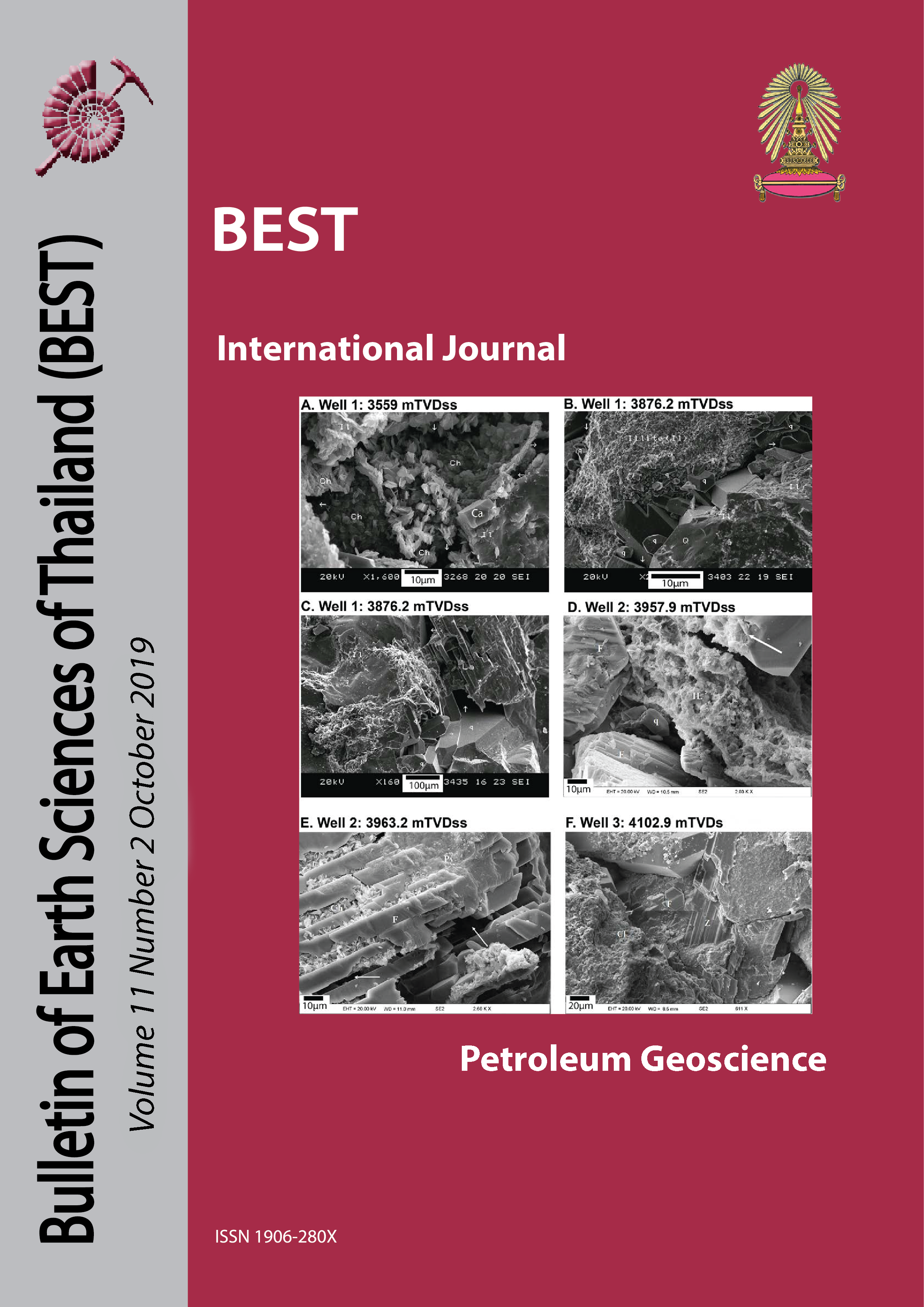RESERVOIR AND HYDROCARBON MAPPING USING FAR-OFFSET AND EXTENDED ELASTIC IMPEDANCE SEISMIC VOLUMES, WESTERN BASIN, GULF OF THAILAND
Main Article Content
Abstract
The study area lies in the center part of the Western Basin, Gulf of Thailand. The reservoirs in the study area are Middle Miocene sandstones of a fluvial-coastal depositional system. Mapping these types of reservoirs is known to be challenging due to rapid lateral variations and possibly complex extensional fault systems. Seismic imaging of these reservoirs using only full-stacked data still have some limitations near the study area. Therefore, rock physics analysis, post-stack seismic inversion and seismic attributes were applied using partial-angle stacked seismic data in order to map sand geometries and identify hydrocarbon-bearing zones. The rock physics analysis such as density, S-wave velocity, P-impedance, and elastic impedance cross plots show different trends of sand and shale along the well respectively. The impedance value of sand is lower than shale. The P-impedance and nearangle elastic impedance cannot distinguish clearly sand and shale lithology in the study area. However, the far-angle elastic impedance displayed a strong contrast of sand and shale trend, which can help identify lithology. The main reservoir Sand Aand secondary reservoir Sand B were observed by using the inverted volumes and seismic attributes such as RMS amplitude and sweetness. The extracted far-angle elastic impedance on vertical section along inverted elastic impedance volume may successfully map the oil-bearing sand. The RMS and sweetness attributes of the far-angle stacked volume show a stronger high amplitude contrast than near-angle and very far-angle stacked volumes. Thus, the combination of seismic attributes and inversion may successfully map reservoir distribution. This study suggests that far-angle elastic impedance can be used to map reservoir distribution and predict oil bearing-sands.
Article Details

This work is licensed under a Creative Commons Attribution-NonCommercial-NoDerivatives 4.0 International License.
Copyright © 2008 Department of Geology, Faculty of Science, Chulalongkorn University. Parts of an article can be photocopied or reproduced without prior written permission from the author(s), but due acknowledgments should be stated or cited accordingly.
References
Barnes, A.E., 2016, Hanbook of Poststack Seismic Attributes: SEG Geophysical References Series, no. 21, p. 59.
Connolly, P., 1999. Elastic Impedance: The Leading Edge, v. 18, p. 438-452.
Heward, A.P., Chuenbunchom, S., Makel, G., Marsland, D., Spring, L., 2000, Nang Nuang oil field, B6/27, Gulf of Thailand: karst reservoirs of meteoric or deep-burial origin?: Geological Society of London, v. 6, no. 1, p. 15-27.
Kamolsilp, M., 2016, Elastic Impedance Inversion for Reservoir and Hydrocarbon Identification, Northern Pattani Basin, Gulf of Thailand: M.Sc. thesis, Chulalongkorn University, 54 p.
Khanna, M., Comrie-Smith, N., Lawlor, M., and Virdy, M.K., 2013, Bualuang Oilfield, Gulf of Thailand: A Successful
Development Using Geosteered Horizontal Wells: adapted from oral presentation, AAPG International Conference and Exhibition, Singapore, 2012.
Lain, H.M., and Bradley, K., 1987, Exploration and development of natural gas, Pattani Basin, Gulf of Thailand: Transactions of the fourth circum-Pacific energy and mineral resources conference, Singapore, p. 171-181.
Mukerji, T., Jorstad, A., and Mavko, G., 1998, Near and far offset impedance: Seismic attributes for identifying lithofacies and pore fluids: Geophysical Research Letters, v. 25, no. 24, p. 4557-4560.
Tang-On, A., 2018, The use of inversion volumes for reservoir imaging, CU Field, Gulf of Thailand: M.Sc. thesis, Chulalongkorn University, 42 p.


